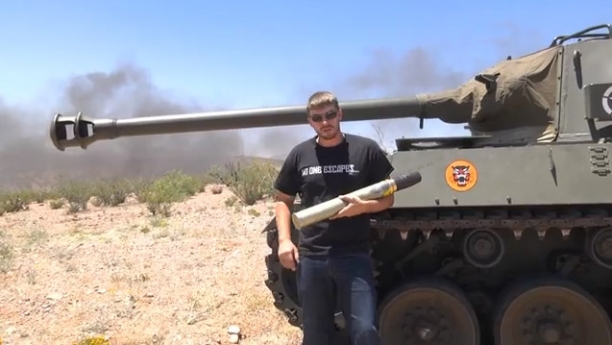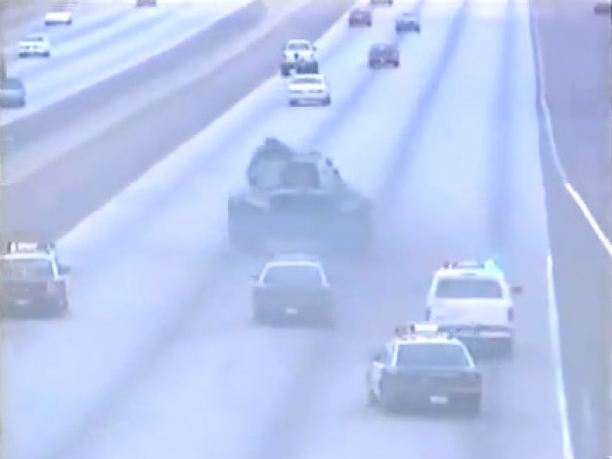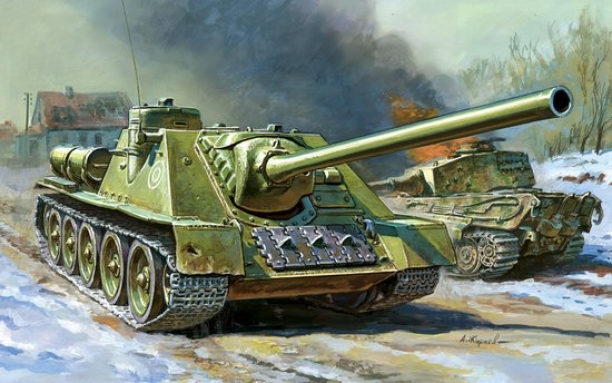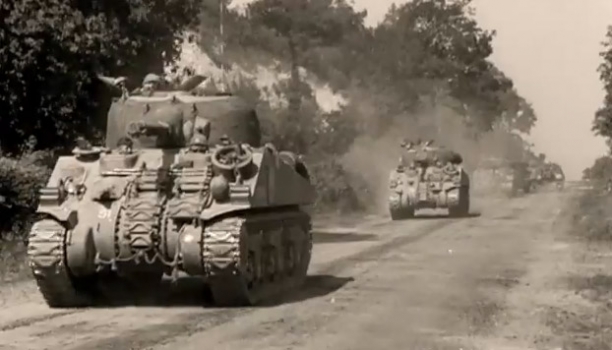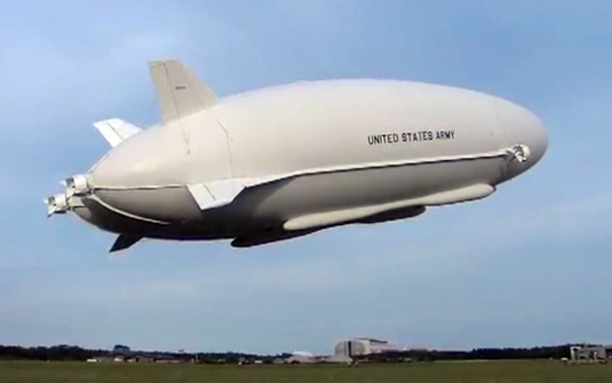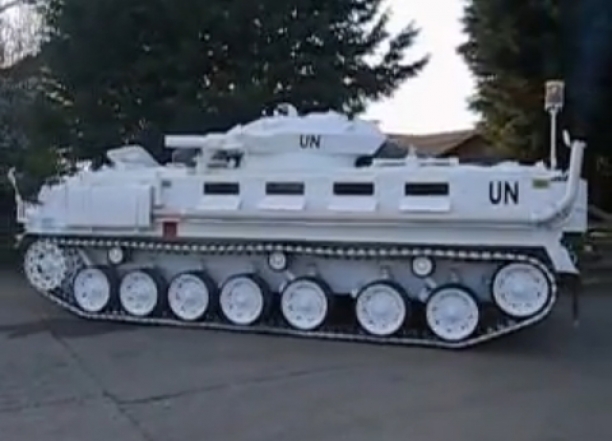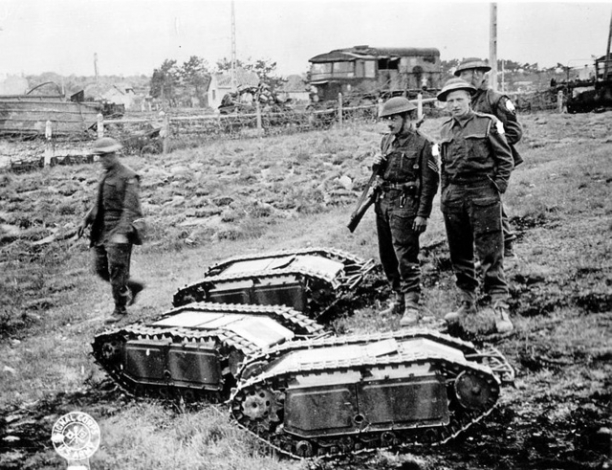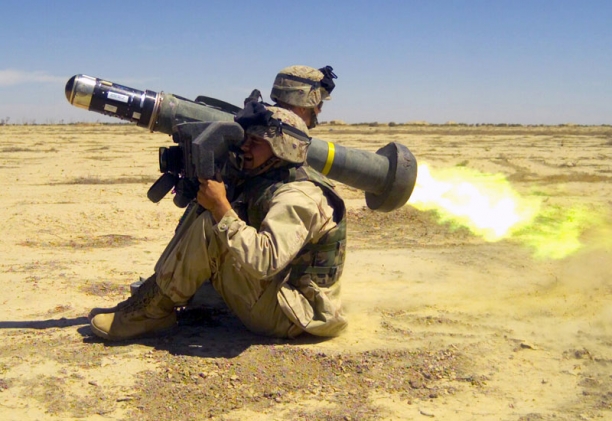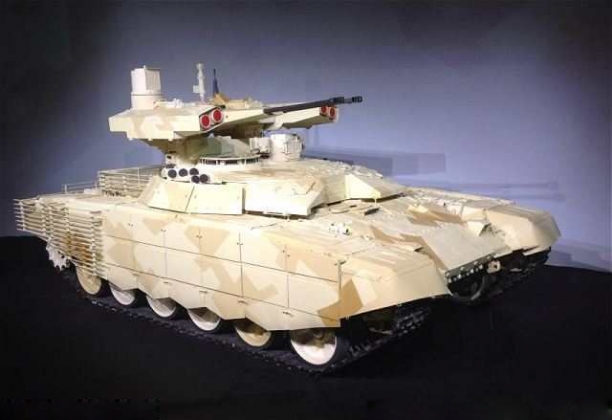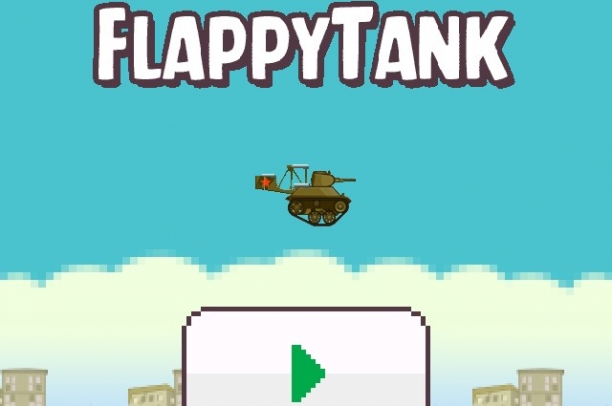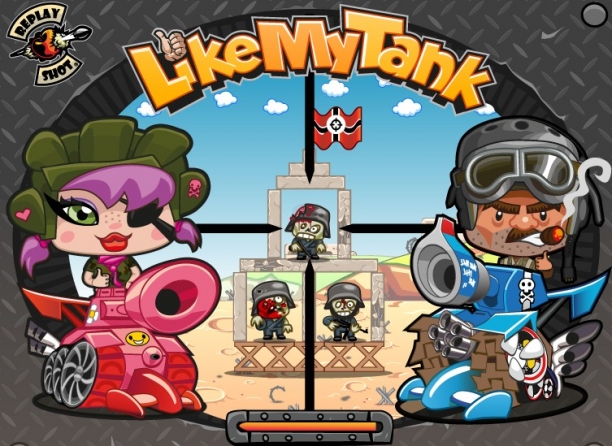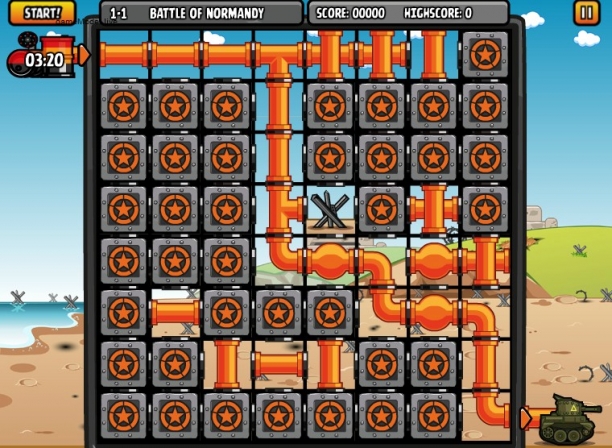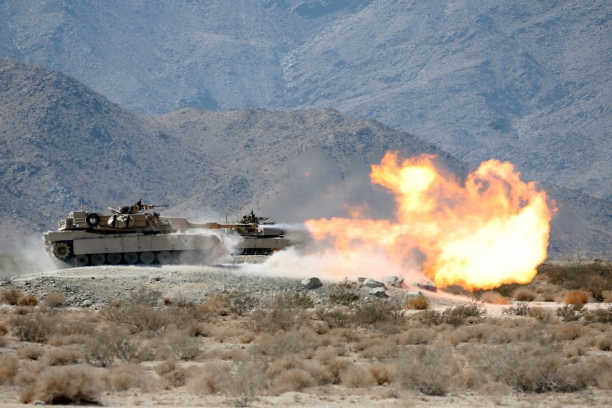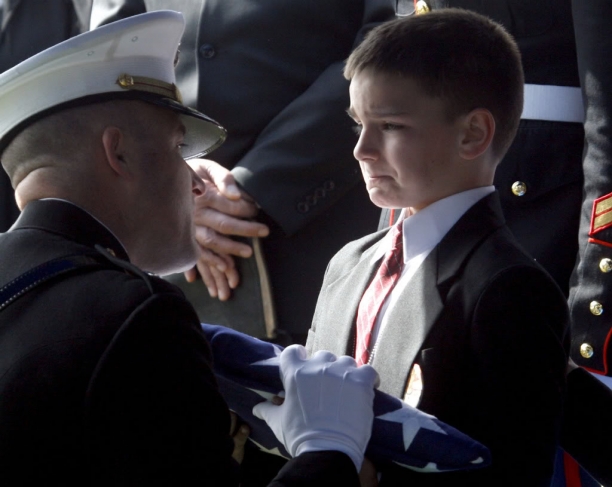
This is a small military vehicle called the Black Hornet Nano, and it is a small helicopter lookalike that functions without anyone actually inside it. It is currently being used by the English military.
Being a small Unmanned Aerial Vehicle (UAV), it gives ground troops the advantage of knowing what other obstacles are located in their vicinity. It's actually so small that you can hold it in your hand, and it weighs just over .5 ounces. The camera inside can let the user see full video from their safe vantage point.
British forces are currently using them in Afghanistan to go into the enemy's area and take reconnaissance images and then return back to the soldier.
It was created specifically to be able to stay in an area and not be noticed in Afghanistan. This can give troops the advantage of knowing if there are any hidden problems that they will need to deal with, thus saving their lives. The videos and pictures are sent back to the operator on a little screen that they can hold in their hand.
How futuristic is that?
|
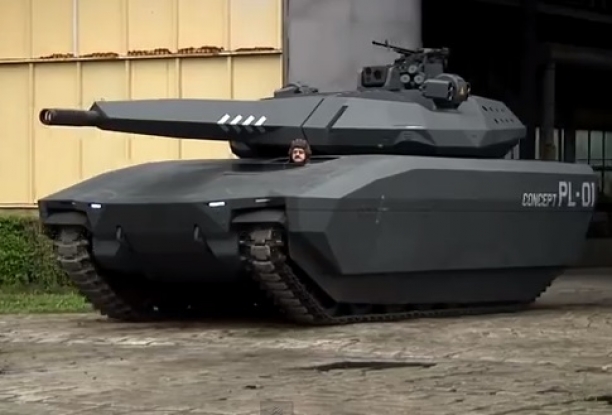
Tank PL-01 idea invented by Polish businesses and a large English company. The tank has a unique look and can be completely changed around to fit the user's preference.
Tank and men
The tank is not a heavy construction that has a goal of fighting other vehicles in combat. The PL-01 lets 3 crew to be seated inside the vehicle, which allows for more armor against outside threats like explosives and mines. It has a new age, ceramic armor that has many different layers.
New hybrid
The tank will use steel or rubber tracks to move along the ground, with a drive that is powered by an engine that is a hybrid. The vehicle can drive at fast speeds wherever it pleases. It can easily go through water as well.
Lots of firing options
The tower has modules, and it allows for a mount that has an auto ammo feed system located on the backside of the tower. It also has a machine gun and a selection of weapons that can be controlled by remote, plus a larger calibre rifle and a grenade launcher.
It is both ready to fight at night and during the day. It lets the drivers observe enemies during the day and night. There will also be an auto detection system for missiles and for partnered forces. Everything will be connected to one system which will be the head behind the guns.
This is one of the most powerful tanks out there. The Polish tank PL-01 will begin being manufactured near 2020.
|
Jagdtiger or "Hunting Tiger" was one of the heavy tank destroyers come out of German factories during the Second World War. It was officially named the Panzerjäger Tiger Ausf (inventory tag Sd. Kfz. 186) because it was primarily based upon a Tiger II chassis which has been lengthened. This heavy duty tank was superior over any Allied tank and out-ranged them all. Its main gun was a PaK 44 L/55 main gun (128 mm). It was considered by the Axis forces as the heaviest operational armored vehicle utilized in WWII.
|
During World War II the M18 Hellcat was the tank used by the Americans to destroy the enemies and a defense against their foes. This armored fighting vehicle has speed up to 60 mph for the reason that the armor is paper thin or not more than 1" thick. It was the fastest tank destroyer in the time of World War II. The enemies were not able to attack the Hellcat troops easily because of the high speed of the tank.
|
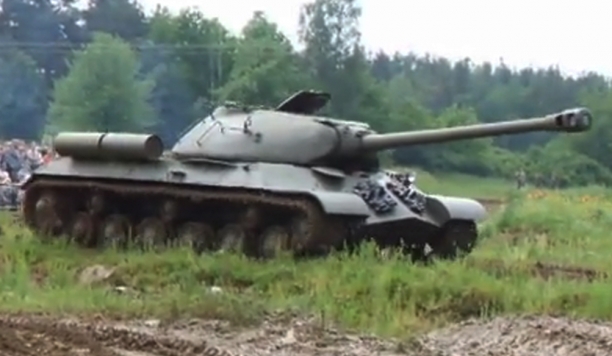
The IS-3 or the Iosef Stalin (Joseph Stalin) IS3 was part of a series of tanks that served Soviet Army during the WWII. The whole series was based upon the KV tanks and began with the IS-1 that was produced in the year 1943. The IS-2 came next during the very same year. The IS-2 came fitted with the 122, main gun - a lethal weapon indeed. The IS-3 was developed afterwards because the Soviets were convinced of its value.
The IS-3 modifications were a re-design of the whole series. For instance, the armor protection of the IS-3 is the best of the lot. This tank has better turret armor protection than its predecessors and is thus a safer machine to operate overall. The armor of the whole series was already a stand out. There were other modifications made on the turret. It was well-rounded and there was more space for the turret crew. Additional projectiles were also given ample space. For better protection from ballistics, the glacis plate had increased slope. The combined modifications on the turret and hull resulted in a lowered silhouette. This made the tank more difficult to track and target from any given angle.
The chief armament of the IS-3 was the 122mm (121.9mm). This was infamous during the war for its excellent penetration capacity and the flexibility that came with it. Expert crew can let off from 2-3 rounds every minute. The projectile choices were expanded as well to include 10 AP or armor-piercing rounds. In addition, there were 18 HE or high-explosive fragmentation. The IS-3 was capable of facilitating battlefield targets.
In October, 1944 the IS-3 prototype was designated as "Object 703." After a very short while and a series of evaluations this was approved for production. Factories in the Soviet Union capable of constructing heavy vehicles were soon busy with construction. The very first operational IS-3 tanks were entered into the inventory of the Soviet Red Army on May, 1945. The IS-3 appeared in the victory parade through the city of Berlin on 7th of September, however, it did not see much action at the front because the war in Europe was mostly over. Adolf Hitler had taken his life and the German capital has fallen under the control of the Soviet Army. Only a few pockets of the German war machine were still continuing the fight, so not much left to deal with.
But it was different in the Pacific because the Soviets were still fighting against Japan. It was said that an IS-3 regiment was deployed in August 1945 in the Far East (mission unknown). By the end of that month the Japanese empire would surrender signaling the end of the war in the Pacific and WWII.
At the time that the Second World War ended, the IS-3 was the most advanced war vehicle of its kind. The Soviets continued producing the IS-3 until mid-1946. About 2,311 units were completed. All the IS-3s in existence were inventoried by the Red Army. The tanks were in the Soviet stockades (it's allies as well) during the years of the Cold War. Even the Western powers had their eye on the IS-3 especially because this tank was a key influence in Soviet tank design in the twenty years that followed.
The IS-3 has a distinctively stout, low-set profile with a curved turret. Somehow its appearance recalls that of an upside-down frying pan. The rifled barrel is long with muzzle break that is double-baffled. The side track on either side has 6 road wheels. The drive sprocket is aft with 3 track return rollers and the idler is held in forward position. The rear compartment is where the V2-IS engine is located while the turret is forward. The heavy chassis was powered by the 520 horsepower engine capable of a top speed of 25 mph. Its range is 115 miles. The IS-3 weighs about 45.77 tons, was 32 feet, 4 inches long and eight feet high. It can be operated by four personnel.
The entire tank body was protected by 20mm - 230mm thick armor which would make it nine inches at the thickest areas. Aside from the armor, the IS-3 was equipped with the D-25T series main gun (121.9mm) and was formidable indeed. Enemy forces loathed attacking it from the front. Its primary weapons were 28 rounds of projectiles (122mm). The secondary armament was a 12.7mm anti-aircraft machine gun which carried 250 rounds. The IS-3 also had one to two 7.62mm anti-infantry machine guns which carried 756 rounds.
The IS-3's design was a step forward in a number of areas. However, it was still beset with mechanical problems much like other heavy tanks of that size. With regard to its operational abilities, the power pack was very unreliable. The transmission systems and engine were both prone to failure. These defects as well as a few matters concerning the hull were possibly due to the speed by which the Soviets pushed for its design & production. It is therefore not surprising that quality control problems would arise. Because of these limitations, a set of upgrades were done, intended to improve certain areas. Some of the improvements made were on the clutch mechanism, road wheels, and new radio equipment. The improvements added to the total weight of the tank by four tons and this additional burden hampered the IS-3's performance a bit.
The Red Army made good use of the IS-3 from the late 1940s until well into the '50s. During the Cold war, the tank underwent a modernization scheme that helped maintain its relevance. After all, its initial design was meant for the World War 2 stage and the Cold War was very different. A number of modern thoroughbreds eventually succeeded the IS-3 and this formidable war machine was soon retired to the history books. Nevertheless, before her time was ended, the IS-3 served a few foreign armies. Egypt was known to favor the IS-3 and even showcased the tank on parades as seen in 1956. The Israeli military captured a few units and these were reconstituted for use of the IDF. The IDF retrofitted the IS-3 with engines from the T54 tanks. The modification improved the performance level for the IDF and gave it a more modern feel. After China's part in the Korean War, this Communist nation also received IS-3 deliveries. The IS-3 was also used as a trainer for new Soviet tanker models before it was taken to storage. The Soviets maintained the IS-3's designation as the most dominant tank in the whole world. Few war vehicles could dispute this distinction.
|

The Leopard 2 is a tank which was developed for the German Army in the early '70s by Krauss-Maffei. It was the successor of the Leopard 1 and soon became the German Army's chief battle tank. The Leopard 2 was first put into service in the year 1979. Aside from Germany this tank came into service in 12 countries in Europe and even some non-European nations sought after it, so there is no wonder around 3,480 Leopard 2 tanks were manufactured in total. In the battlefield, the Leopard 2 made its debut when the German Army brought it to the battlefields of Kosovo. The contingents from Canada and Denmark brought their own Leopard 2s in Afghanistan as part of the International Security Assistance Force.
This tank saw two batches of development. The original models (until Leopard 2A4) had a turret armor that was vertically oriented. The improved models or the Leopard 2A5 on the other hand (along with the versions that followed) boasted of a turret appliqué armor that was angled and arrow shaped. Other improvements were made to the newer batches as well. All of these tank versions were equipped with laser range-finders, digital fire control systems, advanced night vision equipment, thermal imaging (later on) as well as coaxial machine gun & fully stabilized main gun. The upgraded sighting equipment is worth mentioning since it made the tank the very first vehicle to utilize an LLLTV or low-light level TV system. This tank was designed to engage any moving target while in motion over rough terrain.
|
At the 2013 MSPO in Poland a new Polish Armored Support Vehicle was showcased as the most recent addition to the Polish line of tracked vehicles. This vehicle is part of the military program although it is unsure whether it will be mass produced. At this point it is an idea and not yet a tangible vehicle in good working condition.
Definitely, looking forward to seeing the actual vehicle soon. Don't you?
|
A desperate U.S. Army veteran and a plumber without work identified as Shawn Timothy Nelson who took an M60A3 tank for a ride from the US National Guard Armory in San Diego, California was taken out of this world by police :). With the Patton tank he ran amok and destroyed street signs, recreational vehicle and really anything that came to his way which finally led to his killing by the authorities. Check it out.
|
The Marauder - a heavy duty military terrain vehicle which leaves no tree standing. It can even go up against some high end explosives. Join me on a journey through South Africa where Richard Hammond pushes the limits of this beast.
|
This undertaking has been going on since 2007. These futuristic monstrosities were developed as a lighter form of ground vehicles. These Future Combat Systems Manned Ground Vehicles, or MGV were based on vehicle chassis that was commonly tracked. It has 2 men crew instead of 4 and it has much lower profile than normal tanks. The project has been unfortunately superseded by Ground Combat Vehicle.
|
The SU-100 was primarily a tank destroyer made by the Soviets. This case-mate style war vehicle was deployed in the field during the latter part of the Second World War. After the war the Soviets, along with many armies from all over the world, maintained their own active fleet of this beauty.
|
The Second World War was the greatest battle of the technical age, and the tank vehicle was its greatest symbol. The crew who battled from within tanks had first hand knowledge of a lot of the fight taking place in France, the vast deserts in Africa or Italy being invaded, to D Day, and the war ending in Germany.
|
The Long Endurance Multi-Intelligence Vehicle HAV 304 was created to run at twenty thousand feet for up to 3 weeks and go in a radius of 2000 mines to help give assistance to troops on the ground.
The military spent almost $300 million on getting this created, and then got a refund from the producer for just a small amount of what they paid for, just around $300,000.
|
Check this out. The uniquely first tank tracked vehicle which was created by combining a couple of APCs together. It is amazing and guess what? Comes with a a hot tub!
|
In 1942 the Germans introduced a device called the "Doodlebug" or "Goliath. It was a remote-controlled demolition carrier of a 165 pound bomb. Once it reached its target, usually tanks, dense formation with infantry, buildings and bridges. The Doodlebug was a vehicle that was wire-controlled and exploded on impact with targets. More than 4,500 were produced as well as larger versions which could carry 55 more pounds of explosives. This innovation was quite advanced for the time, but not good enough as they were quite slow and difficult to control.
|
The US created the FGM-148 Javelin as a way to replace the Dragon antitank weapon. It's a weapon that can be carried by a man and then fired at a tank.
The way it works is that you can lock on your target before firing and the missile will self guide its way to the target. The missile specifically is used against the top armor of armored vehicle since it is normally much thiner than the other armor. It can also be used to shoot at buildings and go after enemy helicopters. It can go up to a height of five hundred feet when being used in top attack mode and sixty meters when in direct fire mode.
|
The BMPT-72, or Terminator 2, is a new type of tank that is being made to support combat in Russia.
It first came out in September of 2013 in an expo in Russian Nizhny Tagil.
It has a guided shooting system that can take out tanks, infantry, and other objects from far away.
I love it, don't you?
|

The General Atomics Avenger, formerly known as the Predator C is an unmanned combat air vehicle. This war machine is built for the US Military by the General Atomics Aeronautical Systems. This drone first took to the air in April 4, 2009.
The Avenger is different from other drones like MQ-1 Predator and the MQ-9 Reaper (Predator B) because it has stealth features and a turbofan engine. The stealth features of this vehicle are: 1) S-shaped exhaust for lower heat and decreased radar signature, 2) internal weapons storage.
This new Avenger drone is capable of carrying the Lynx aperture radar equipment and supporting MQ-9 weapons. It can also be fitted with the electro-optical targeting system (EOTS) similar to that of the F-35 Lightning II. This drone also has the ALERT (Advanced Low-observable Embedded Reconnaissance Targeting) system.
The General Atomics Avenger requires similar ground supportive systems as the MQ-9 & MQ-1 models. The infrastructure, communications networks, and ground control center are no different.
|
OBRUM in cooperation with British BAE Systems created a Design Polish tank direct support. During the International Defense Industry Exhibition which was held in 2nd September, 2013, a model of the new tank design was revealed. Layout PL-01 is not very different from the main tanks. However, the driver is at the front of the vehicle while the turret (unmanned) is found at the back. The gunner and commander can both fit in the interior while the rear can accommodate as many as 4 soldiers. The target completion of the prototype is the year 2016 and the mass production is set to begin two years after in 2018. I can't wait to see this beauty in action. What do you think?
|
|
|




